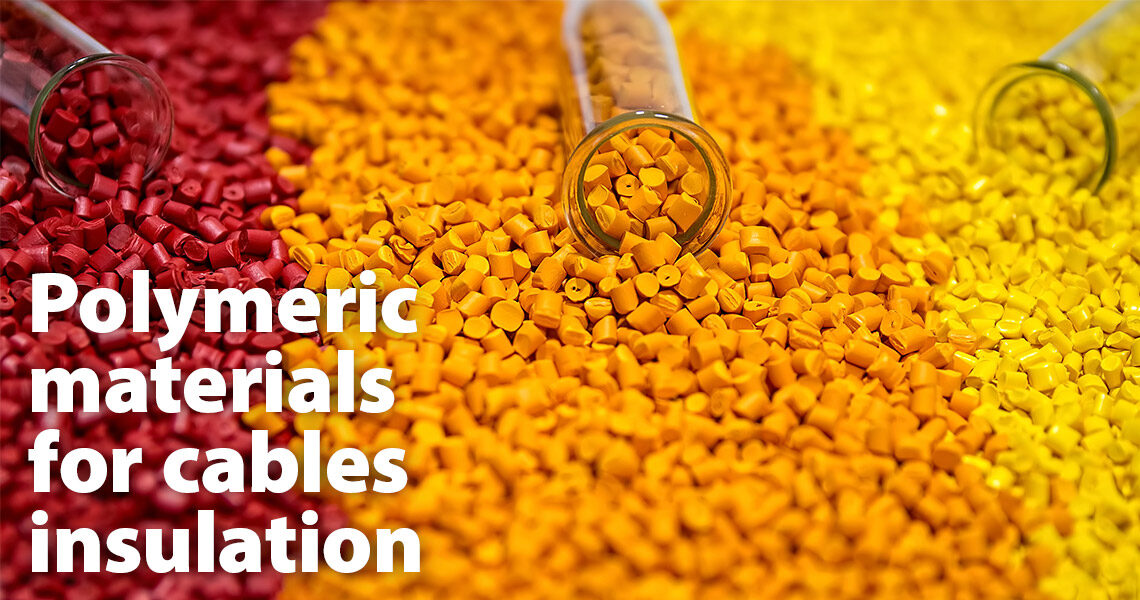- Use: Insulation on low voltage (LV), medium voltage (MV), high voltage (HV) and extra high voltage (EHV) cables.
General characteristics
Cross-linked polythene (XLPE) is used mainly as an insulant and is now used almost universally as the insulation on LV, MV, HV and EHV mains power cables.
Polyethylene, which is thermoplastic, can be transformed into an elastomeric material (XLPE) by vulcanisation or cross-linking, which may be accomplished by either chemical or irradiation methods, although irradiation is usually limited to a small radial thickness of insulation.
Cross-linked polythene has good mechanical properties and good resistance to abrasion coupled with excellent dielectric properties. Because of its elastomeric nature, it withstands high temperatures without melting or excessively deforming. XLPE has higher modulus and strength at elevated temperatures compared to HDPE. It also has reduced creep and sensitivity to stress cracking. To obtain good weathering properties, it is necessary to pigment the XLPE with carbon black or add a specific UV stabiliser. The resistance of XLPE to water is excellent, to chemicals and solvents generally good, but it has rather poor resistance to mineral and vegetable oils. Standard XLPE compounds are not flame retardant; however, they are classed as halogen-free. Their corona resistance is not as good as EP rubbers.
Processing
Like conventional elastomers, XLPE is applied by single screw extruders, although in the case of MV, HV and EHV cables, three single screw extruders are used together to apply the triple layer, conductor screen, insulation, insulation screen construction required, vulcanisation or cross-linking then follows.
Early versions of LV XLPE insulated cables were chemically cross-!inked by Sioplas or Monosil techniques using hot water or steam to promote cross-linking; in recent years, an ambient temperature cure system based upon silane has been developed and is now almost universally used. For LV cables, pigments, clay, or other carefully selected fillers can be used, and the resultant compound still retains good electrical properties.
Most of the MV, HV and EHV XLPE insulated cables used today are chemically cross-!inked in steam or gas-filled CV tubes using mainly unfilled compounds to ensure the high electrical properties demanded by these applications.
Deactivators are, however, usually added to all XLPE cables made with plain copper conductors to provide thermo-oxidative stability in contact with copper, which can act as a catalyst.
Uses of material/Cable types
XLPE is very popular and mainly used as insulation on low-voltage power cables, but it can also be compounded as a covering on overhead bundled cables. It finds wide acceptance with DNOs, Industrial cables and also as insulation for ships and offshore installation cables, and any normally fixed wiring application where good dielectric properties are required.
Because of its stable dielectric properties over a wide temperature range, XLPE is usually the insulation of choice for medium voltage, high voltage and extra high voltage cables, although in some applications, such as subsea, EPR is preferred by some customers.
XLPE insulation is rated for operation at a continuous conductor temperature of 90oC; XLPE insulation itself can withstand installation at -40oC, although the sheath and coverings may restrict this to higher temperatures
Standards
XLPE is included or referenced in the following standards:
- IEC 60092-360
- IEC 60502-1
- IEC 60502-2
- IEC 60840
- HD 603
- HD 604
- HD 620
- BS EN 50536
- BS 5467
- BS 7655
- BS 6724
- BS 7211
- BS 7870
- BS 8436
- BS 8573
List of Polymeric materials for cables used:
- Chlorinated Polyethylene – CPE
- Chloro Sulphonated Polyethylene – CSP
- Crossed Linked Polyethylene – XLPE
- Ethylene Propylene Rubber – EPR and EPDM
- Fire performance Silicone Rubber
- General Purpose Silicone Rubber
- LSZH Cross linked
- LSZH Thermoplastic
- Nylon
- Polyethylene
- Polyethylene – PE
- Polyvinyl Chloride – PVC Insulation
- Polyvinyl Chloride (PVC) Sheath
- PVC Nitrile










